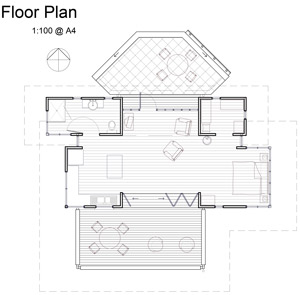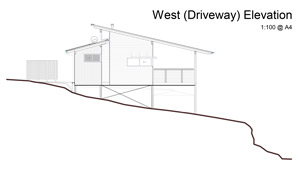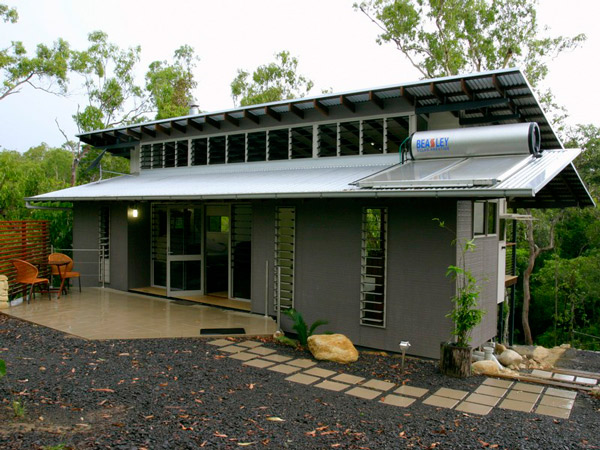TUDLab Research Projects Tropical Sustainable Design Case Studies All case studies McClintock Residence
McClintock Residence
- Future Students
- JCU Global Experience
- International Students
- Open Day
- How to apply
- Pathways to university
- Virtual Open Day
- Living on Campus
- Courses
- Publications
- Scholarships
- Parents and Partners
- JCU Heroes Programs
- Aboriginal and Torres Strait Islander in Marine Science
- Elite Athletes
- Defence
- Current Students
- New students
- JCU Orientation
- LearnJCU
- Placements
- CEE
- Unicare Centre and Unicampus Kids
- Graduation
- Off-Campus Students
- JCU Job Ready
- Safety and Wellbeing
- JCU Prizes
- Professional Experience Placement
- Employability Edge
- Art of Academic Writing
- Art of Academic Editing
- Careers and Employability
- Student Equity and Wellbeing
- Career Ready Plan
- Careers at JCU
- Partners and Community
- JCU-CSIRO Partnership
- Alumni
- About JCU
- Reputation and Experience
- Chancellery
- Governance
- Celebrating 50 Years
- Academy
- Indigenous Engagement
- Education Division
- Graduate Research School
- Research and Teaching
- Research Division
- Research and Innovation Services
- CASE
- College of Business, Law and Governance
- College of Healthcare Sciences
- College of Medicine and Dentistry
- College of Science and Engineering
- CPHMVS
- Anthropological Laboratory for Tropical Audiovisual Research (ALTAR)
- Anton Breinl Research Centre
- Agriculture Technology and Adoption Centre (AgTAC)
- Advanced Analytical Centre
- AMHHEC
- Aquaculture Solutions
- AusAsian Mental Health Research Group
- ARCSTA
- Area 61
- Lions Marine Research Trust
- Australian Tropical Herbarium
- Australian Quantum & Classical Transport Physics Group
- Boating and Diving
- Clinical Psychedelic Research Lab
- Centre for Tropical Biosecurity
- Centre for Tropical Bioinformatics and Molecular Biology
- CITBA
- CMT
- Centre for Disaster Solutions
- CSTFA
- Cyclone Testing Station
- The Centre for Disaster Studies
- Daintree Rainforest Observatory
- Fletcherview
- JCU Eduquarium
- JCU Turtle Health Research
- Language and Culture Research Centre
- MARF
- Orpheus
- TESS
- JCU Ideas Lab
- TARL
- eResearch
- Indigenous Education and Research Centre
- Estate
- Work Health and Safety
- Staff
- Discover Nature at JCU
- Cyber Security Hub
- Association of Australian University Secretaries
- Services and Resources Division
- Environmental Research Complex [ERC]
- Foundation for Australian Literary Studies
- Gender Equity Action and Research
- Give to JCU
- Indigenous Legal Needs Project
- Inherent Requirements
- IsoTropics Geochemistry Lab
- IT Services
- JCU Webinars
- JCU Events
- JCU Motorsports
- JCU Sport
- Library
- Mabo Decision: 30 years on
- Marine Geophysics Laboratory
- Office of the Vice Chancellor and President
- Outstanding Alumni
- Pharmacy Full Scope
- Planning for your future
- Policy
- PAHL
- Queensland Research Centre for Peripheral Vascular Disease
- Rapid Assessment Unit
- RDIM
- Researcher Development Portal
- Roderick Centre for Australian Literature and Creative Writing
- Contextual Science for Tropical Coastal Ecosystems
- State of the Tropics
- Strategic Procurement
- Student profiles
- SWIRLnet
- TREAD
- TropEco for Staff and Students
- TQ Maths Hub
- TUDLab
- VAVS Home
- WHOCC for Vector-borne & NTDs
- Media
- Copyright and Terms of Use
- Australian Institute of Tropical Health & Medicine
- Pay review
RESIDENTIAL
Key facts
Carefully crafted simplicity and efficiency closely fitting function
The property has no mains power and all energy is generated on site
Project data
Location: Koah (nr Kuranda), QLD, Australia
Year completed: 2007
OVERVIEW
The client approached the architect with a design for a small studio dwelling to be constructed on their acreage property bordering the Clohesy River on the edge of Barron Gorge national park. The property had no mains power or water, but had an existing shed (which the clients were living in) and solar power system.
The owners had conceived their design based on a kit home, but had ideas for a diagonally split roof which they couldn’t resolve with the kit home supplier. The core of their design – open plan bedroom/kitchen/dining, one bathroom, walk-in robe and summer and winter decks with a split roof form – was made into a rational design taking account of breeze paths, sun angles and functional space forms.
Each space was carefully crafted to closely fit its function, eliminating wasted construction and providing just the right amount of light, ventilation and space. The resulting form embeds in the natural surrounds and creates the peaceful ambience the clients desired.
The owner builder was supported by Battistin Builders who completed a large part of the construction work.
The site consists of scrubby eucalypt forest with minimal clearing. The available site area for building had a substantial slope, which was used to good advantage by the lightweight construction. Minimal benching was required to place the water tanks beneath the dwelling, and access is at ground level on the north side. The site slopes down to the south toward the river, affording high level views from the south (summer) deck down to the water below. This deck looks into the lower canopy of the surrounding eucalypts.
 |  |
The design is characterised by simplicity and efficiency. No elaborate or wasteful devices have been used, just careful consideration of the spatial requirements and composition to maximise the ambient benefits.
The design is split into 2 forms – North and South, with the main circulation access crossing these resulting in 4 resting places – bathroom and robe to the north, and bedroom and kitchen in the south. The circulation spaces are formed through the winter patio, lounge, dining space and summer deck.
The robe and bathroom are located in the north form as this has the lower roof and more enclosed feel, whilst the kitchen and bedroom benefit from the cooling high ceiling and clerestory glazing from the high roof. The main roof falls down to the southern edge of the summer deck to maximise the shading from the summer sun, and to direct views down to the river.
Material selections were kept lightweight for ease of construction on the site. Steel and fibre-cement claddings were selected for termite resistance and lower fire risk. Heavy materials were used for the winter patio to the north side of the house to maximise thermal mass for the cooler winter months when the house is heated by a wood fired combustion heater – providing a warm retreat in the winter.
The property has no mains power, so all energy is generated on site by the photo voltaic solar system. Hot water is also solar. Backup power is provided with a small petrol generator.
Power requirements are minimised through excellent passive ventilation, carefully designed shading to all glazed areas (supplemented by shade from the forest), and abundant natural light provided by the windows and amplified by the deliberately small footprint.
All the rainwater from the roof is collected on site in 2x 22,000 litre tanks located under the house in the undercroft space.
“The house is easy to clean and low maintenance. The form of the building with lots of openings and the high ceiling with louvre windows keep it cool. It works.
The only thing I would change are the windows near the bed, which the architect designed to be quite low so you could see down to the river from lying in bed, but the builder talked me into putting them up at a normal height. It would have been nicer to have them down low.”
- Base building architect/ designer: CA Architects - Stuart Withrington
- Structural engineer: CMG
- Builder: Battistin Builders
Information and photos are supplied by the project owners and designers. The Tropical Green Building Network and James Cook University (the administrators) cannot guarantee the accuracy or authenticity of this content. Produced July 2014.
